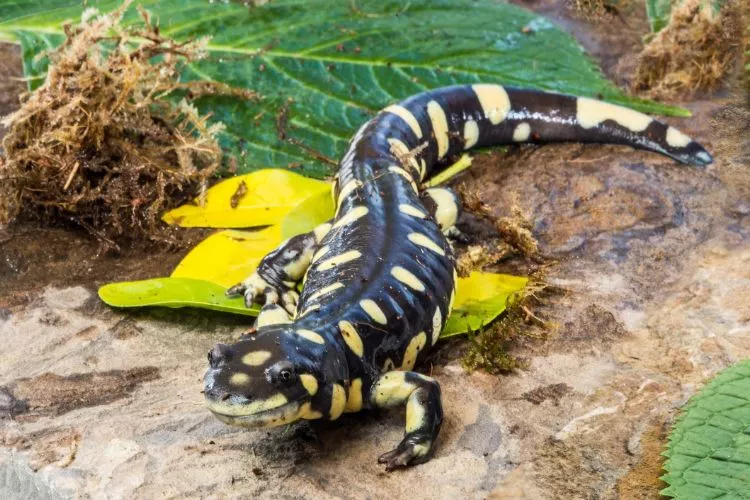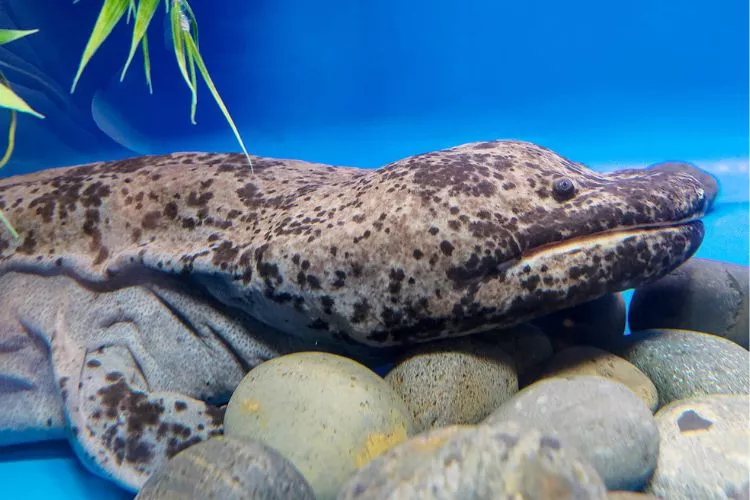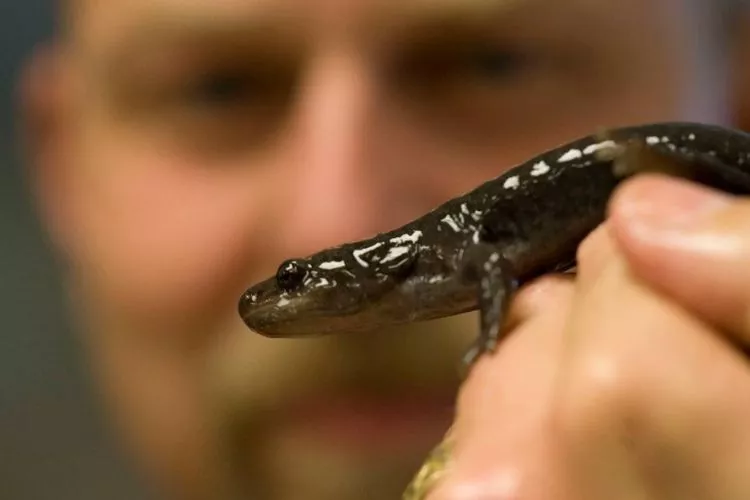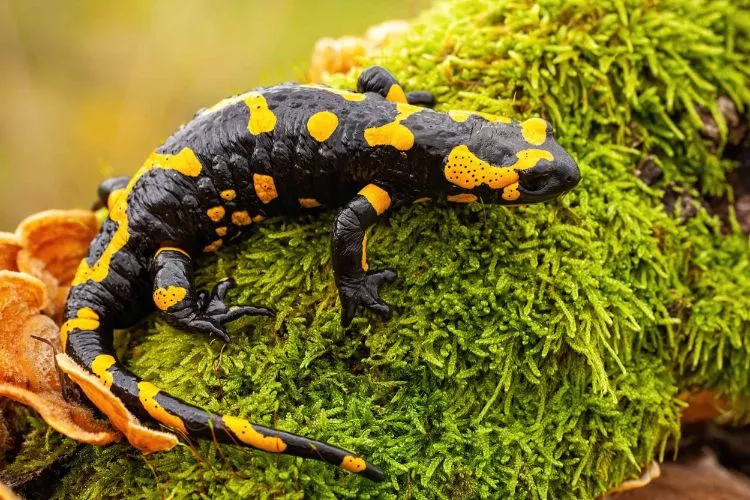Salamanders might not be your first choice. However, the question remains: “Can you eat salamanders?”
While their exotic allure may tempt the adventurous foodies, it’s important to understand the implications linked to health, ecology, and legality.

This article seeks to delve into these complex factors to determine whether consuming salamanders is a viable and – perhaps more critically – a safe option.
Can you eat salamanders?
Technically, while salamanders can be eaten, it’s strongly discouraged, and often illegal, due to various factors.
First, many salamander species carry toxins in their skin, which can cause illnesses or even prove lethal to human beings when ingested.
Cooking them isn’t a guaranteed solution as some toxins can survive even high temperatures. Second, salamanders play an essential role in their ecosystems, helping control insect populations and contributing to nutrient cycling.
Overharvesting salamanders for food can disrupt this balance.
Moreover, many salamanders are threatened or endangered due to habitat loss and disease, and taking them from the wild is both destructive and often illegal.
In conclusion, while it might be physically possible to eat a salamander, the health risks combined with the environmental and legal consequences make it an ill-advised choice.
Always respect wildlife for its critical role in maintaining our ecosystems and choose your food sources responsibly.
Is it illegal to eat giant salamanders?
Yes, it is illegal to eat giant salamanders in many countries, including China and the United States, where these species are found.
Giant salamanders, such as the Chinese and Japanese giant salamanders, are listed as critically endangered species due to habitat loss, pollution, and overharvesting for food and traditional medicine.

As such, they are protected under national laws and international conservation agreements, making it illegal to hunt, capture, or eat them. In addition, trading in giant salamanders or their parts is also strictly regulated and often prohibited.
What part of a salamander is poisonous?
Many salamander species, such as the California newt and the rough-skinned newt, have skin glands that produce a highly toxic substance called tetrodotoxin.
This poisonous compound is found all over the skin of the salamander. In some species, it’s also present in their internal organs. The poison acts as a deterrent against predators.
It’s potent even in tiny amounts and can be deadly to many animals, including humans, by blocking the electrical signals in the nerves and muscles, leading to paralysis and possibly heart failure.
The poison is especially dangerous if ingested or enters the bloodstream, while skin contact can cause irritation or other reactions. Therefore, it’s critical to handle salamanders, especially unknown species, with care and to avoid eating them.
Do salamanders carry diseases?
Yes, salamanders can carry a variety of diseases. These amphibious creatures are known to host several types of infectious diseases. These include the salamander-killing fungus (Bsal) that has led to significant population declines in Europe.

They can also carry infections like the Ranavirus, chytrid fungal infection, and others that can impact both their health and those of other creatures in their ecosystem.
Interestingly, salamanders and other similar pets are known carriers of Salmonella, a bacteria that can cause serious illness in humans.
Why do people eat salamanders?
While this practice is not widespread due to most salamanders being poisonous and some species being endangered and hence protected by law, a few cultures have historically eaten salamanders.
The motivations are varied, ranging from considering it an exotic delicacy to attributing medicinal benefits to it.
For example, in some East Asian cultures, giant salamanders have been used for food and medicinal purposes. However, due to the aforementioned health risks and legal issues, it’s strongly advised against and is often illegal.
Do Chinese people eat salamanders?
Yes, there is a history of eating salamander in some Chinese cultures, particularly the Chinese giant salamander. This animal’s meat is considered a delicacy and often used in flavorful dishes.

However, the Chinese giant salamander is critically endangered, pushed to the brink largely because of overharvesting for food. This has led to regulations that make it illegal to hunt, sell, or consume them in certain areas or during certain seasons.
What do salamanders taste like?
On the question of taste, it’s quite challenging to find a definitive answer. However, if prepared and cooked correctly, salamander meat is said to be quite delicious.
It’s important to note, however, that many species of salamanders are toxic, and consuming them may bear significant health risks. Thus, it is not recommended for consumption.
Conclusion:
Salamanders, while physically edible, are generally not safe or advised for consumption. The significant health risks due to their toxic nature, protected status of many species, and negative impact on biodiversity all overwhelmingly point to the responsibility we hold to respect and preserve these creatures rather than view them as a food source.
The conservation and ethical implications underline the issue’s importance, reminding us to make responsible choices in our culinary pursuits.
Not all aspects of nature are intended for our consumption, and in this case, salamanders are best left in their natural habitats.


